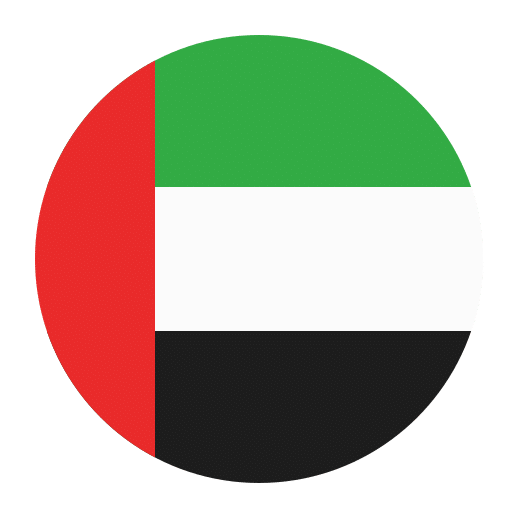Learning a new language can be both exciting and challenging. One way to make the process more engaging is by focusing on vocabulary related to your interests and daily activities. If you’re passionate about home improvement and are learning Arabic, you’ll find this article particularly useful. We’ll explore essential Arabic vocabulary that will help you discuss home improvement projects, tools, and materials with ease.
Basic Home Improvement Vocabulary
Before diving into specific tools and materials, it’s essential to learn some basic home improvement terms. Here are some words that will help you describe general home improvement activities:
– منزل (manzil) – Home
– تحسين (tahseen) – Improvement
– ترميم (tarmeem) – Renovation
– تصليح (tasleeH) – Repair
– بناء (binaa’) – Construction
– دهان (dahaan) – Paint
– أرضية (arDiyya) – Floor
– جدار (jidaar) – Wall
– سقف (saqf) – Ceiling
– نافذة (nafidha) – Window
– باب (baab) – Door
Tools and Equipment
When working on home improvement projects, you’ll need a variety of tools and equipment. Here are some common tools you might use:
Hand Tools
– مطرقة (maTraqa) – Hammer
– مفك براغي (mufak baraaghi) – Screwdriver
– كماشة (kamaasha) – Pliers
– منشار (minshaar) – Saw
– شريط قياس (shareeT qiyaas) – Measuring Tape
– مسمار (mismaar) – Nail
– برغي (burghy) – Screw
– مفتاح ربط (miftaaH rabT) – Wrench
– مبرد (mubarrid) – File
Power Tools
– مثقاب كهربائي (mithqaab kahrabaa’i) – Electric Drill
– منشار كهربائي (minshaar kahrabaa’i) – Electric Saw
– مفك كهربائي (mufak kahrabaa’i) – Electric Screwdriver
– صنفرة كهربائية (sanfarah kahrabaa’i) – Electric Sander
– مطرقة كهربائية (maTraqa kahrabaa’i) – Electric Hammer
Materials
Understanding the materials you’ll be working with is crucial for any home improvement project. Here are some common materials used in construction and renovation:
– خشب (khashab) – Wood
– حديد (Hadeed) – Iron
– أسمنت (asmant) – Cement
– طوب (Toob) – Bricks
– رمل (raml) – Sand
– حصى (HaSa) – Gravel
– جبس (jibs) – Gypsum
– بلاط (balaat) – Tiles
– زجاج (zujaj) – Glass
Rooms and Areas
Knowing the names of different rooms and areas in a house will help you better describe your projects. Here are some common rooms and areas:
– غرفة نوم (ghurfat noom) – Bedroom
– غرفة معيشة (ghurfat maeesha) – Living Room
– مطبخ (maTbakh) – Kitchen
– حمام (Hammaam) – Bathroom
– غرفة طعام (ghurfat Taam) – Dining Room
– مرآب (miraa’b) – Garage
– حديقة (Hadeeqa) – Garden
– سطح (saTH) – Roof
– قبو (qaboo) – Basement
– شرفة (shurfa) – Balcony
Painting and Decorating
Painting and decorating are common home improvement activities. Here are some useful terms for these tasks:
– فرشاة (fursha) – Brush
– رول دهان (rool dahaan) – Paint Roller
– دهان (dahaan) – Paint
– ألوان (alwan) – Colors
– ديكور (deekor) – Decor
– ورق حائط (waraq HaiT) – Wallpaper
– ستارة (sataara) – Curtain
– إضاءة (iDaa’a) – Lighting
Electrical and Plumbing
Electrical and plumbing work is often part of home improvement projects. Here are some relevant terms:
Electrical
– سلك (silk) – Wire
– مصباح (miSbaaH) – Light Bulb
– مقبس (maqbas) – Socket
– مفتاح كهربائي (miftaaH kahrabaa’i) – Switch
– لوحة كهربائية (lawHa kahrabaa’i) – Electrical Panel
Plumbing
– أنبوب (anboob) – Pipe
– حنفية (Hanafiya) – Faucet
– مرحاض (maraHaaD) – Toilet
– حوض (HooD) – Sink
– استحمام (istihmaam) – Shower
– تسريب (tasreeb) – Leak
– مضخة (maDkha) – Pump
Useful Phrases
To help you put your new vocabulary into practice, here are some useful phrases for discussing home improvement projects in Arabic:
– أريد أن أصلح الحائط (ureed an aSlaH al-HaiT) – I want to repair the wall.
– هل يمكنك مساعدتي في تركيب هذه النافذة؟ (hal yumkinuka musaa’adati fi tarkeeb hadhihi al-nafidha?) – Can you help me install this window?
– نحتاج إلى المزيد من الطلاء (naHtaaj ila al-mazeed min al-Tala’) – We need more paint.
– أين يمكنني شراء الخشب؟ (ayn yumkinuni shiraa’ al-khashab?) – Where can I buy wood?
– كيف أصلح هذا التسريب؟ (kayfa aSlaH hadha al-tasreeb?) – How do I fix this leak?
– أي نوع من البراغي أحتاج؟ (ay naw’ min al-baraaghi aHtaaj?) – What kind of screws do I need?
– هل يمكنك تركيب الأضواء؟ (hal yumkinuka tarkeeb al-aDwaa’?) – Can you install the lights?
Practice Makes Perfect
Now that you have a solid foundation of Arabic vocabulary related to home improvement, it’s time to practice. Here are some tips to help you integrate these new words into your language learning routine:
1. **Flashcards**: Create flashcards with the Arabic word on one side and the English translation on the other. Review them regularly to reinforce your memory.
2. **Label Your Tools**: If you have a workshop or toolbox, label your tools with their Arabic names. This will help you associate the words with the objects.
3. **Watch Videos**: Look for Arabic-language home improvement videos on platforms like YouTube. This will help you see and hear the vocabulary in context.
4. **Practice with a Partner**: If you have a language partner or tutor, practice discussing home improvement projects using your new vocabulary.
5. **Apply in Real Life**: Whenever you’re working on a home improvement project, try to think of and use the Arabic words for the tools, materials, and actions involved.
By focusing on vocabulary related to your interests, you’ll find language learning more enjoyable and relevant. Whether you’re fixing a leaky faucet or painting a room, these Arabic words and phrases will help you communicate your home improvement needs effectively. Happy learning and happy renovating!

